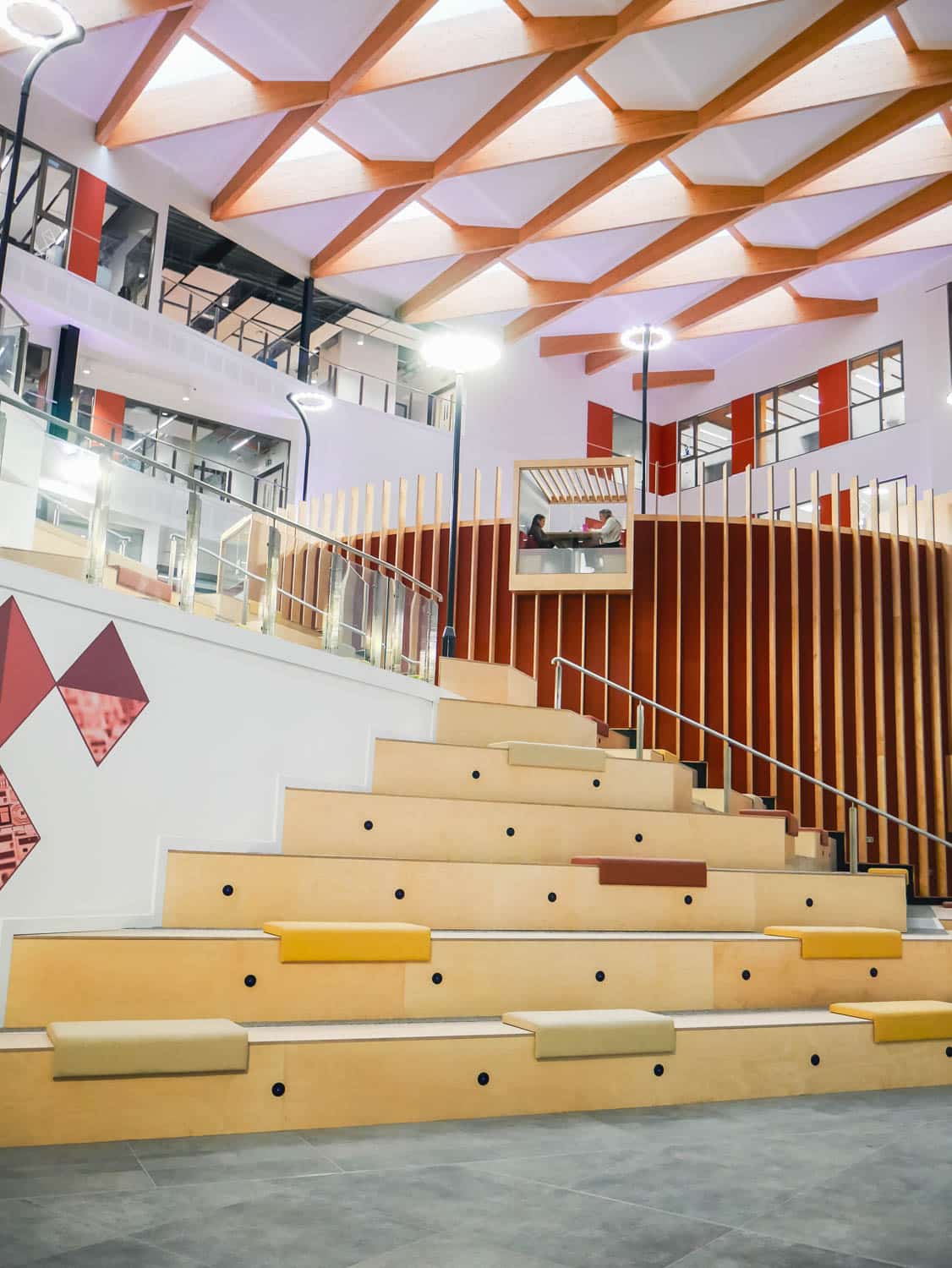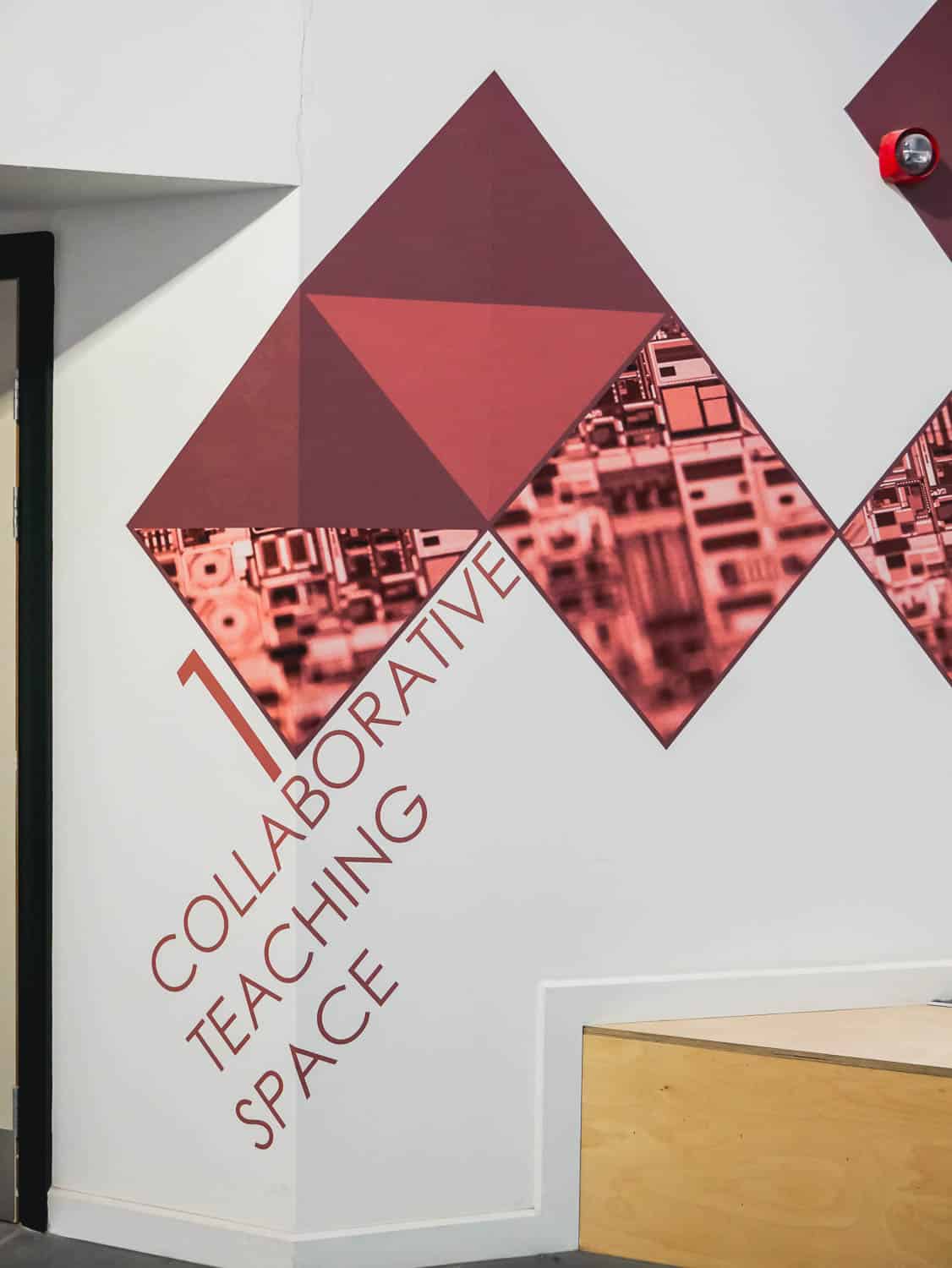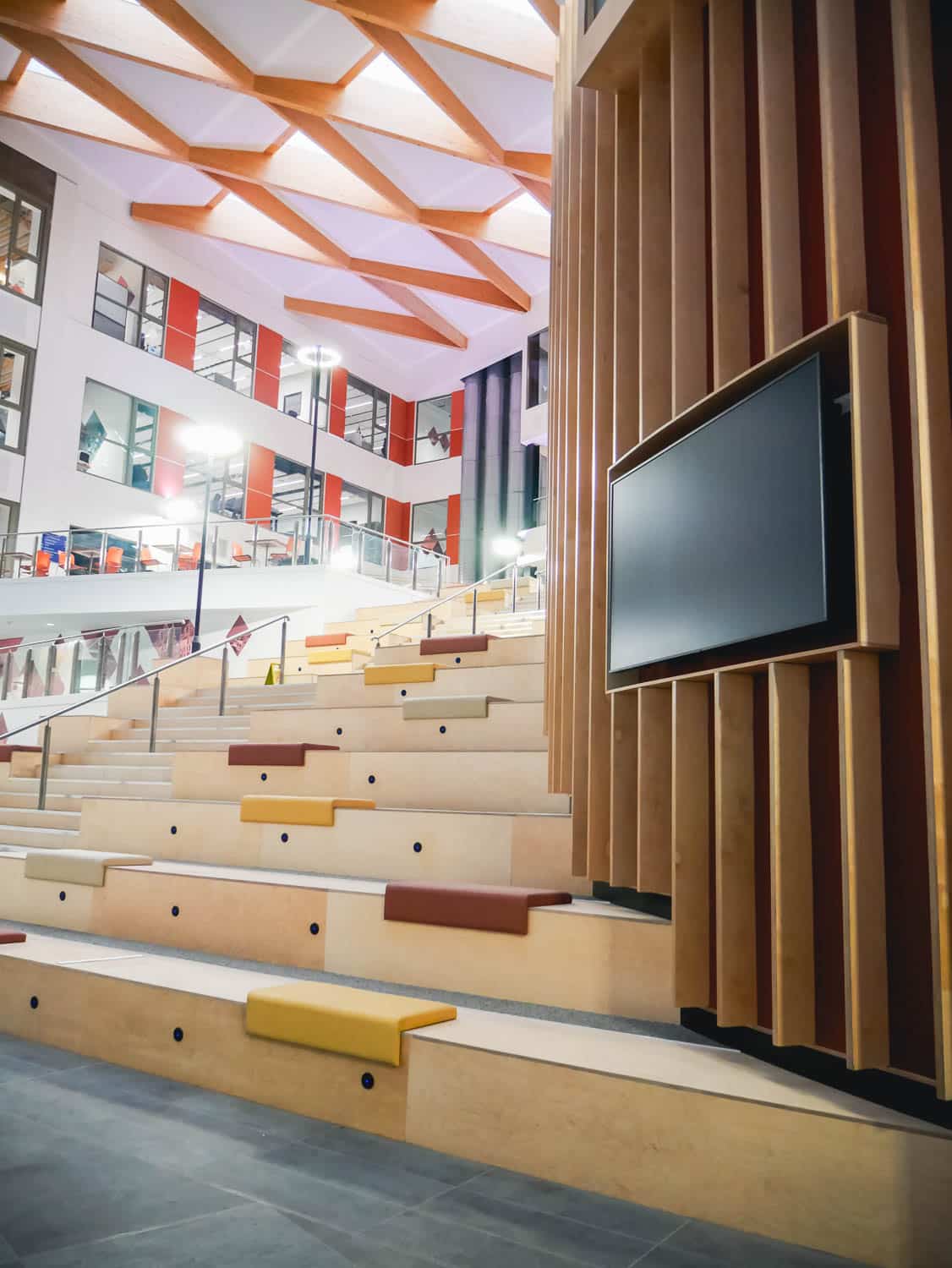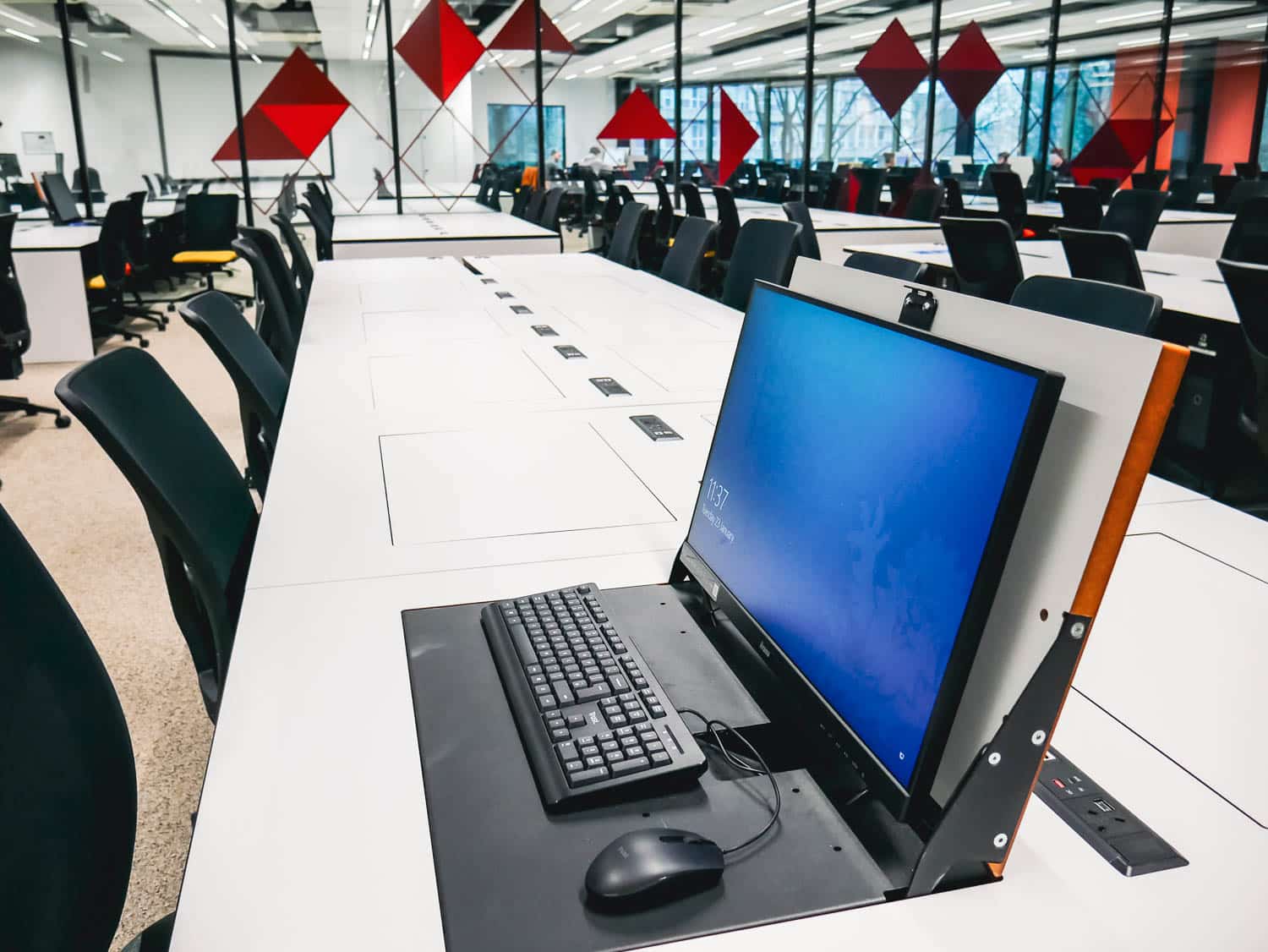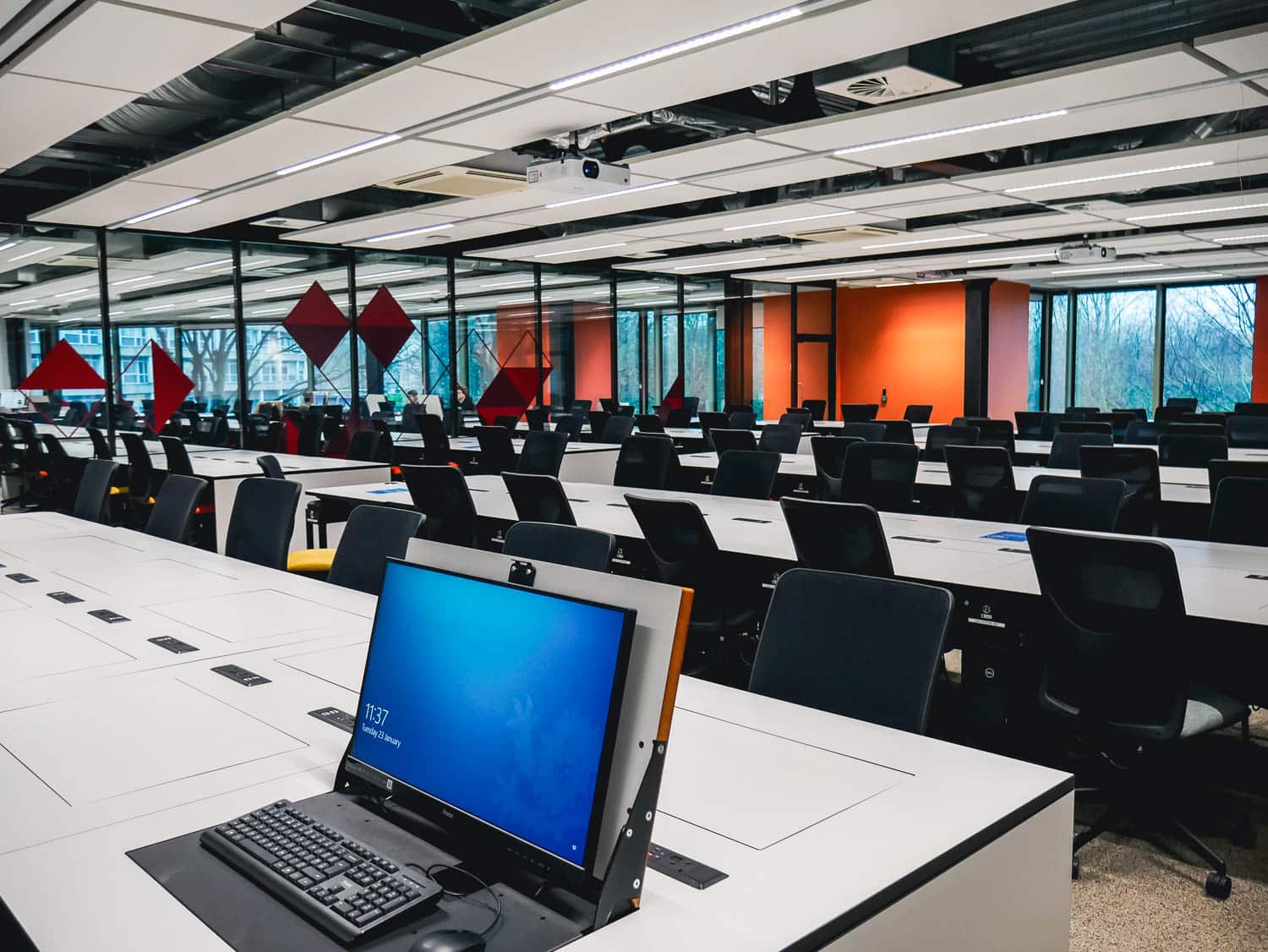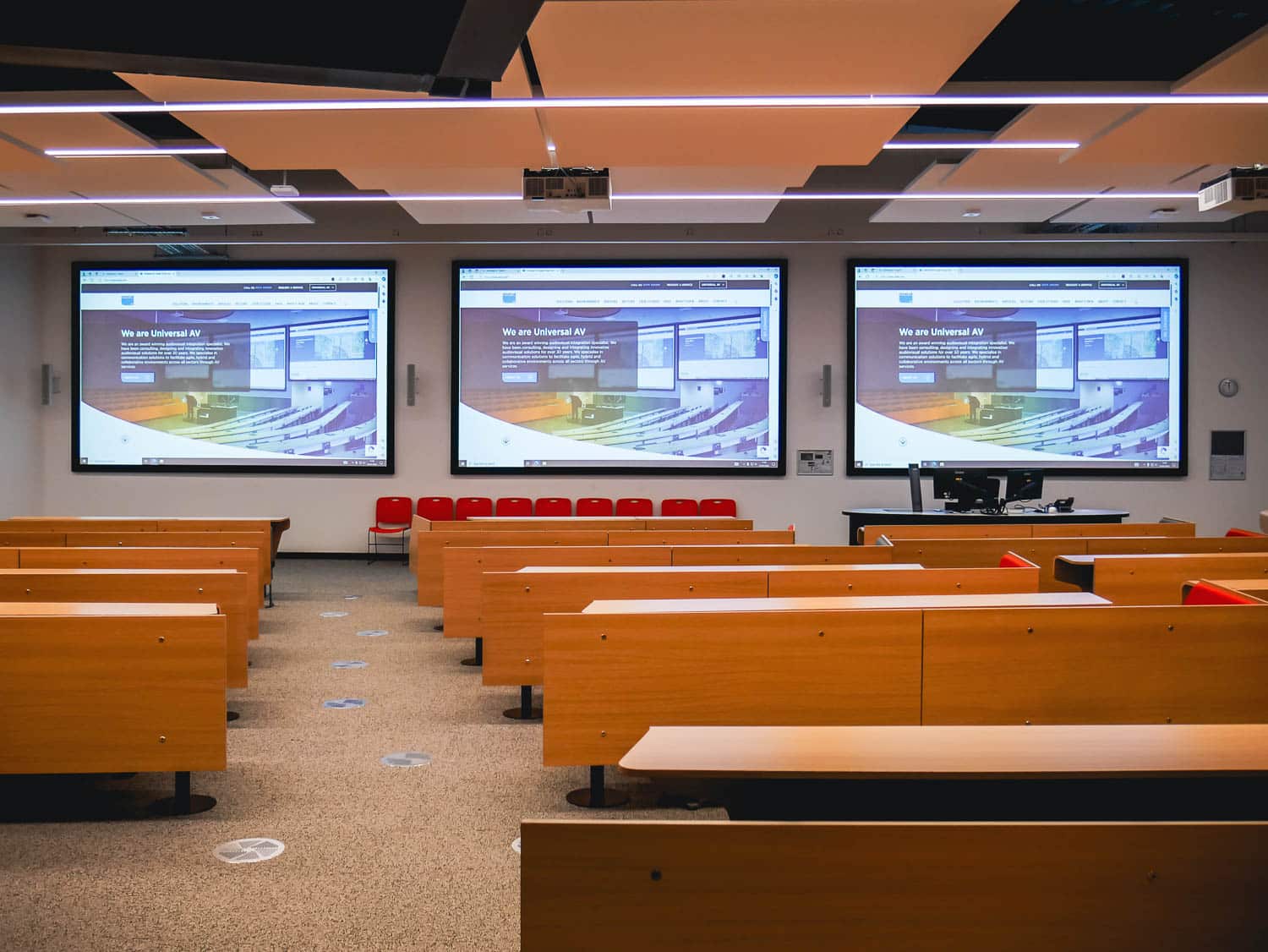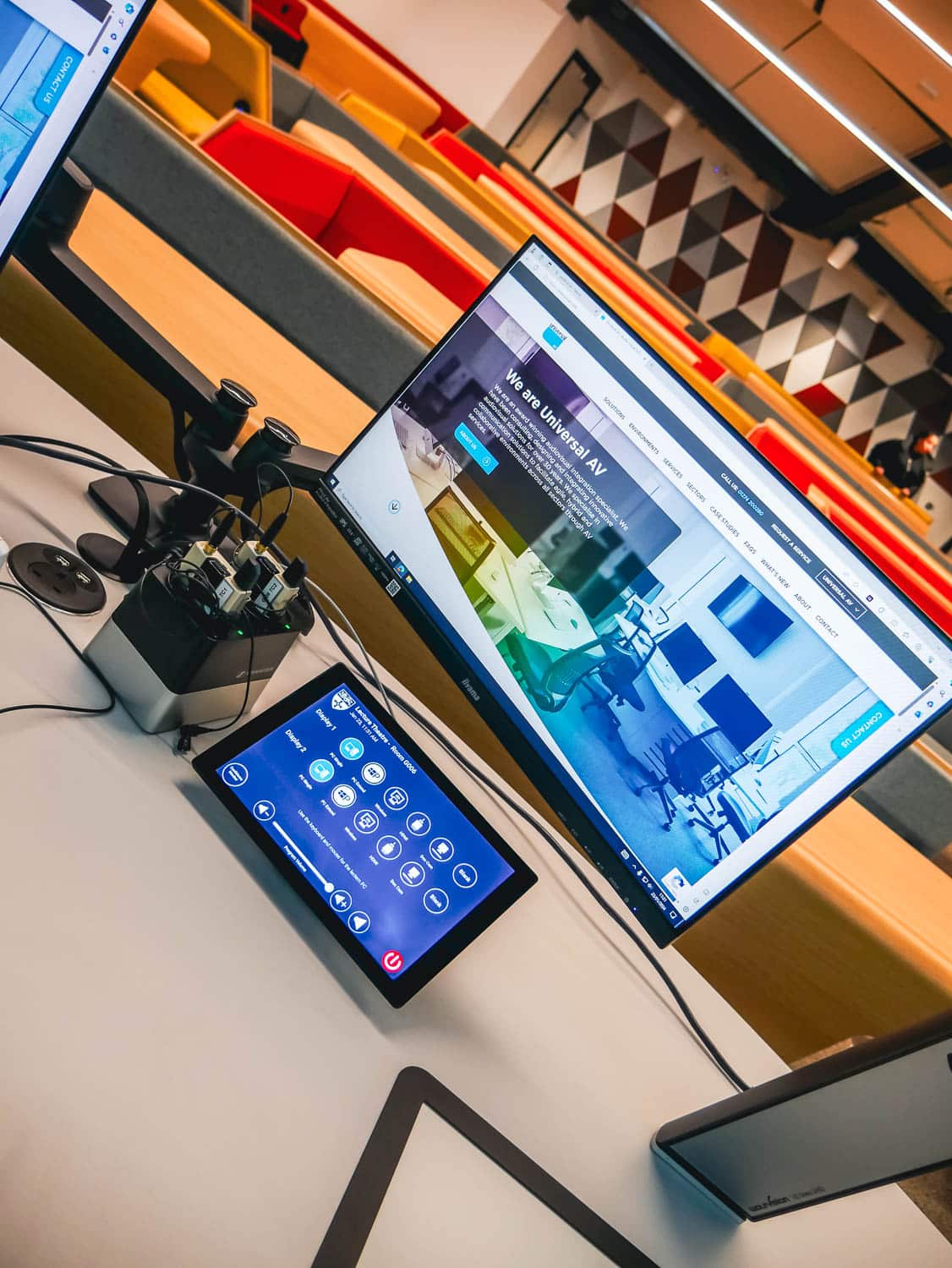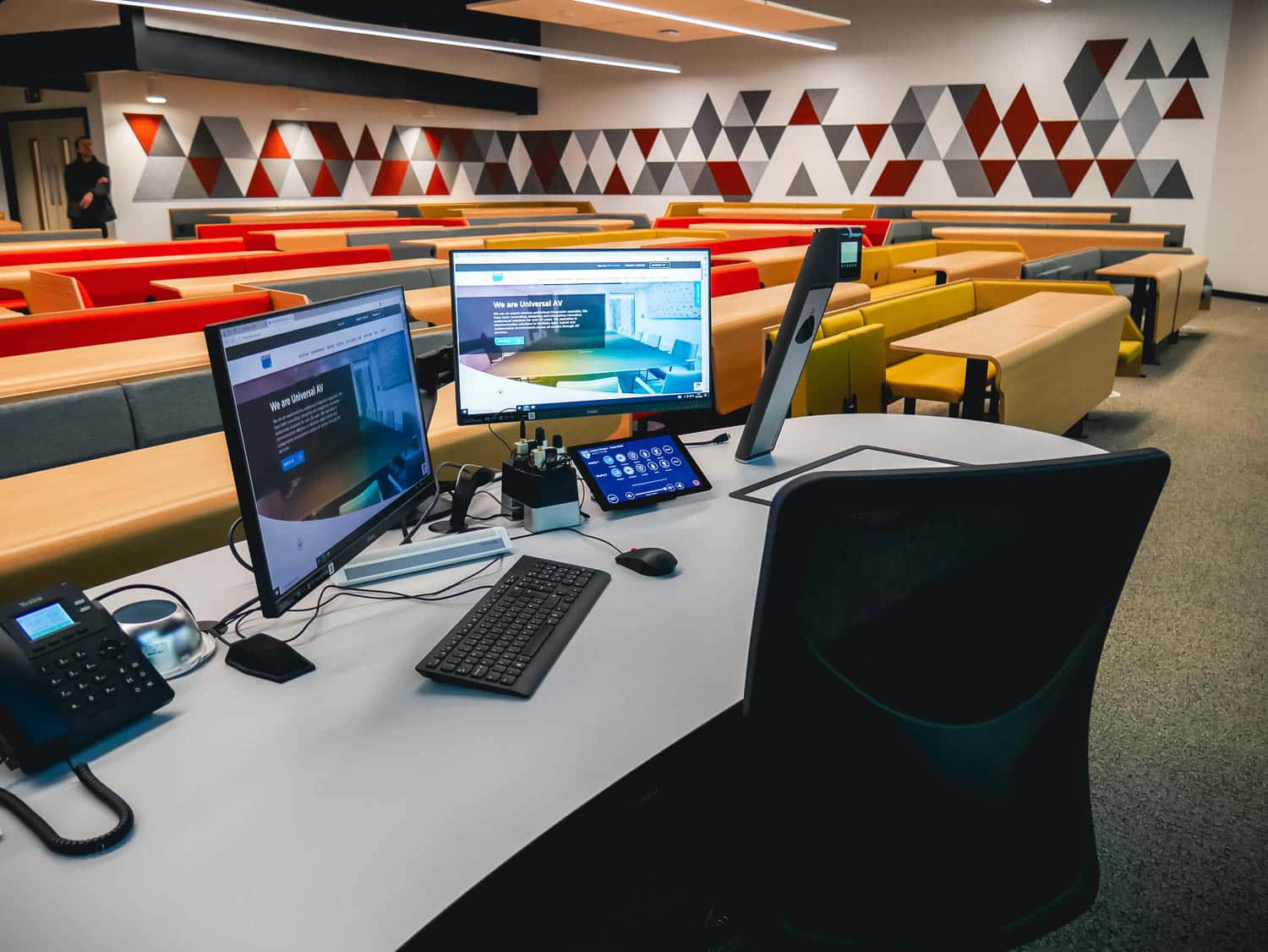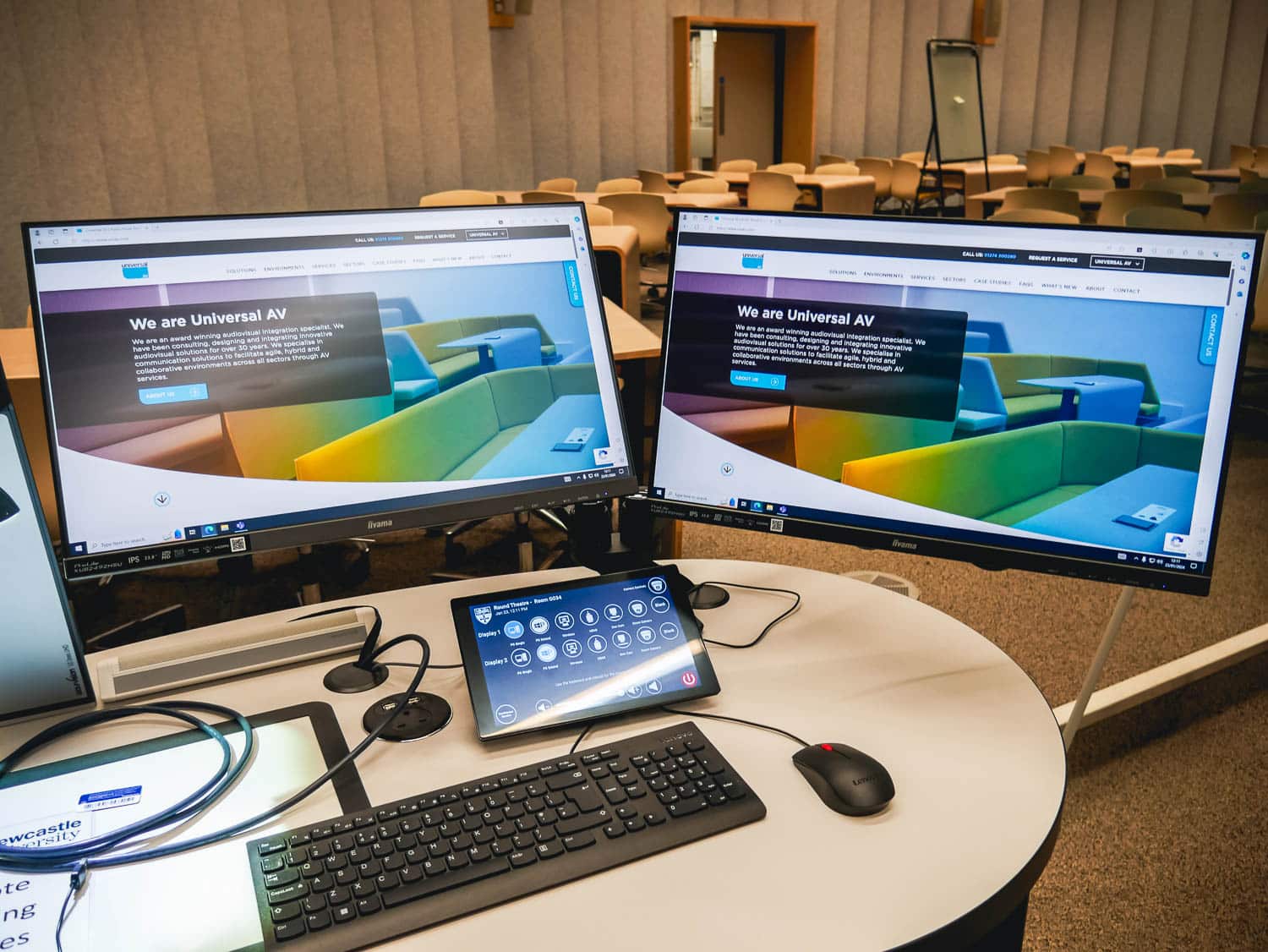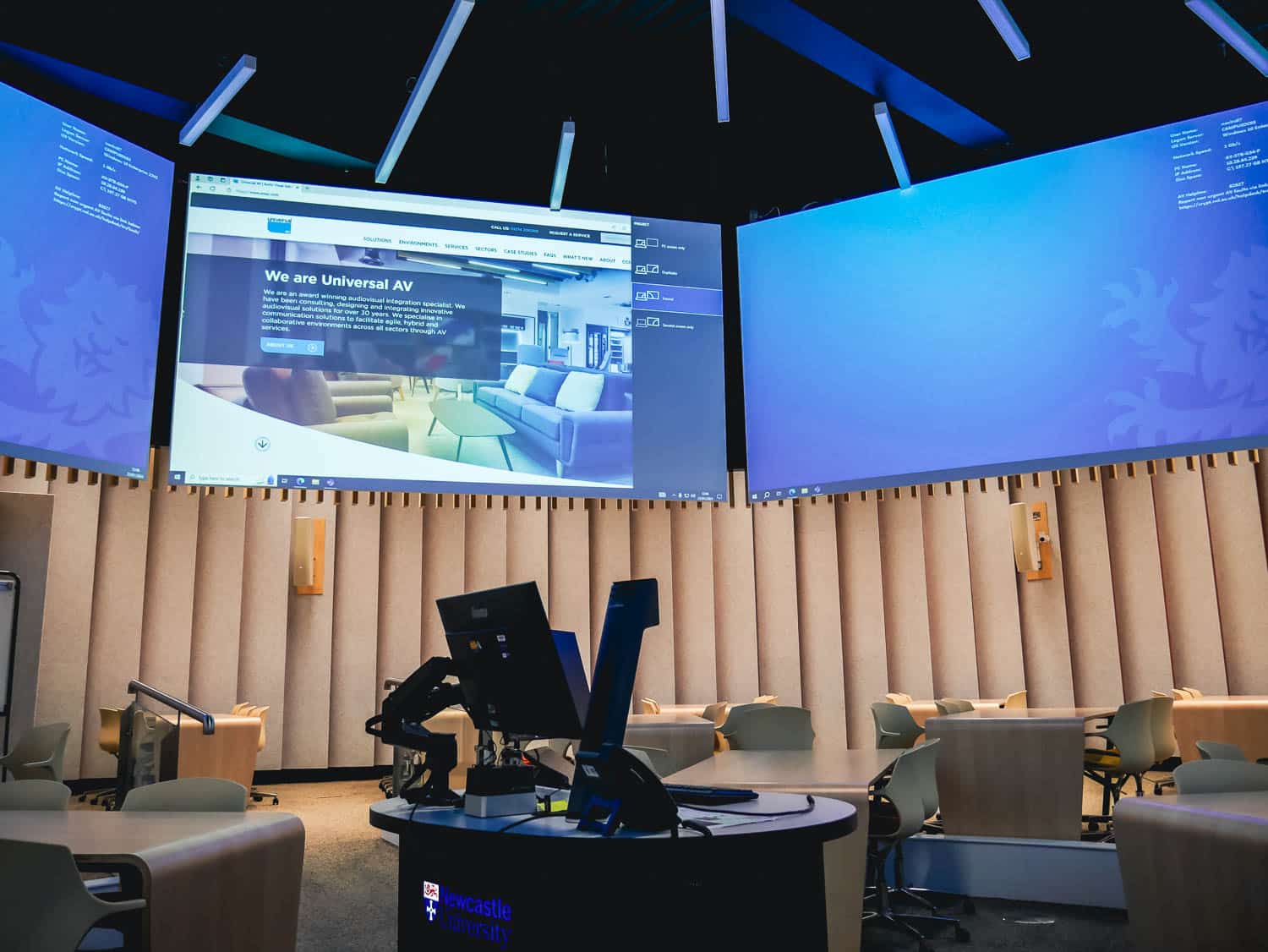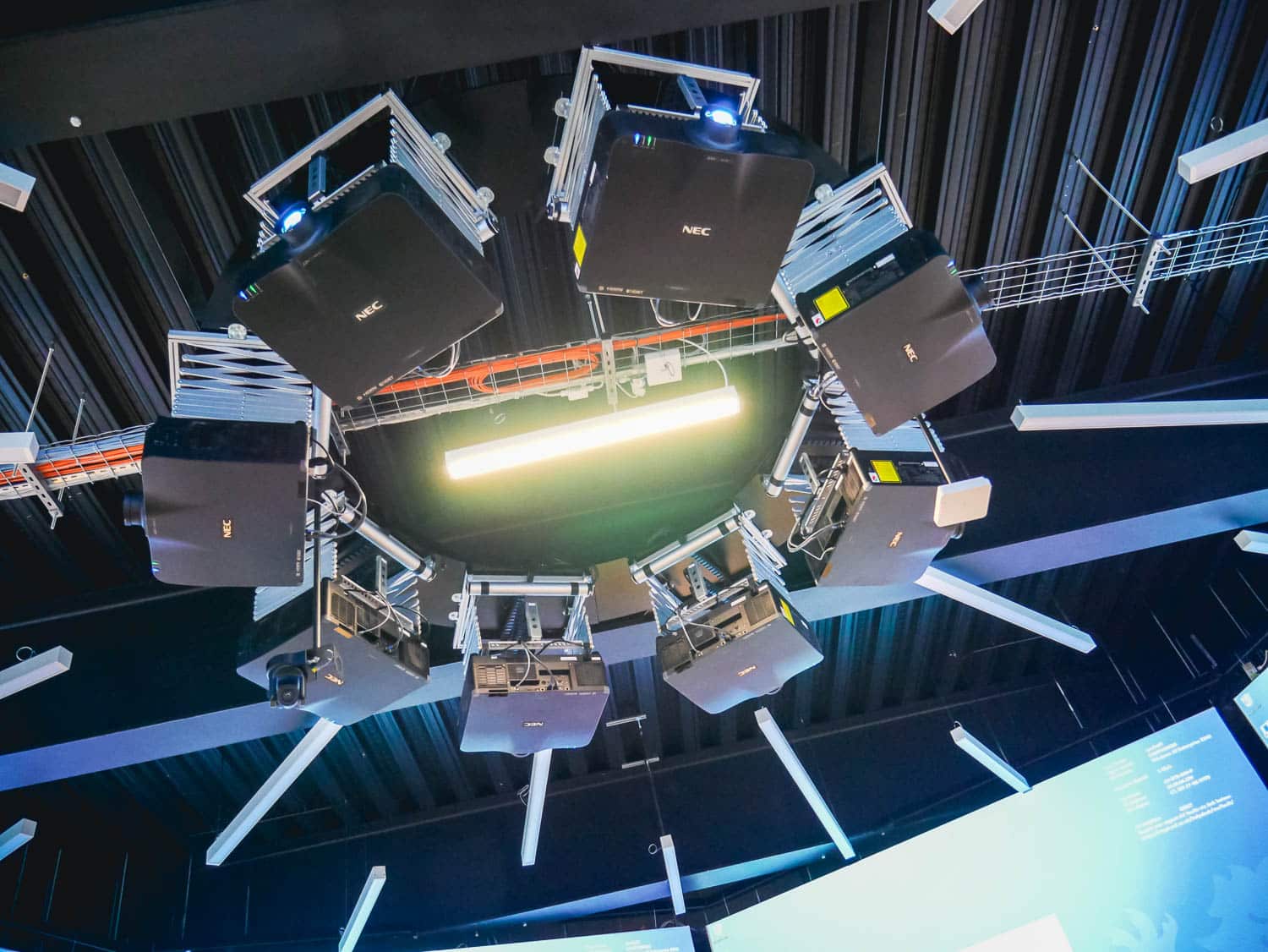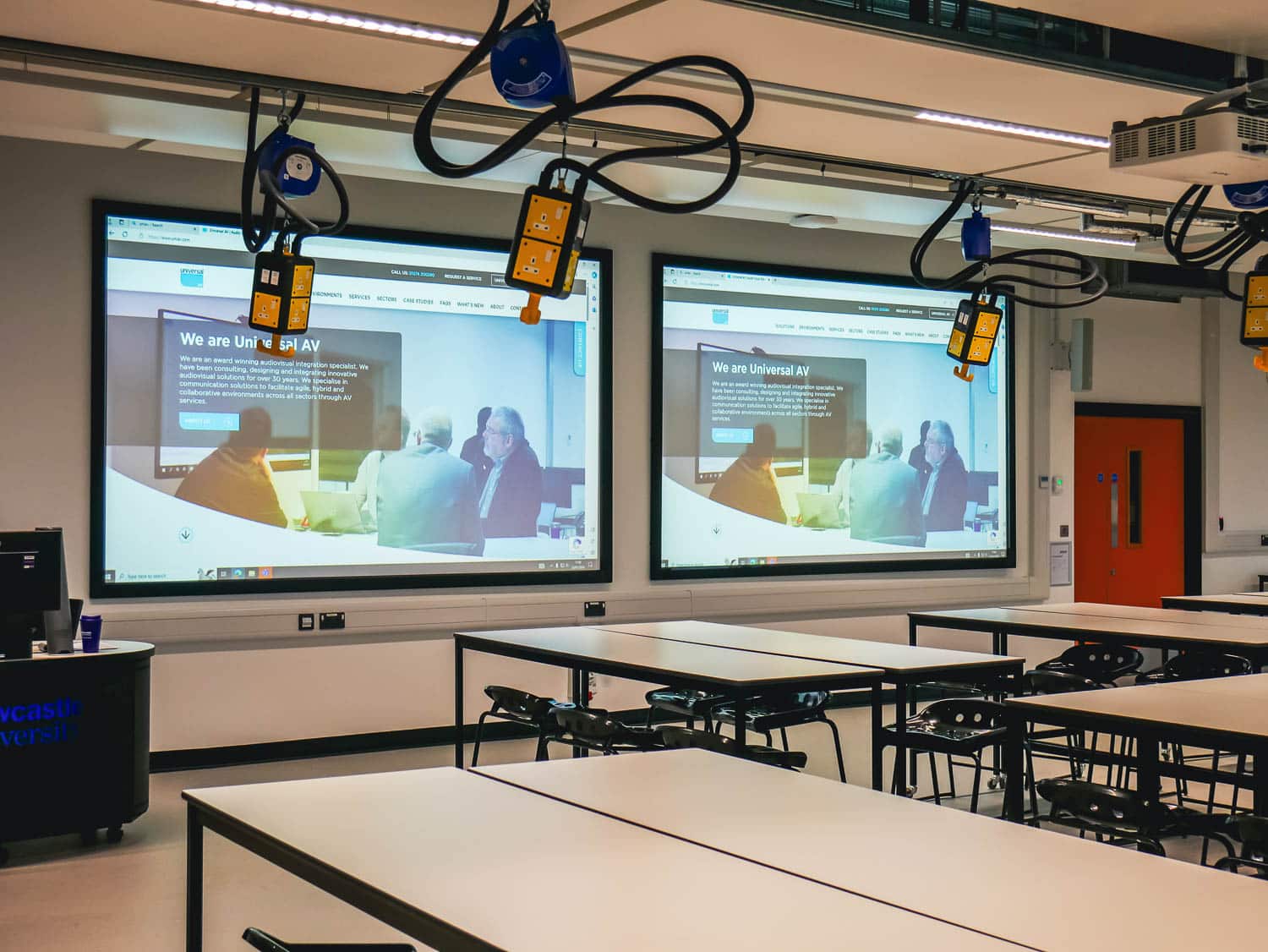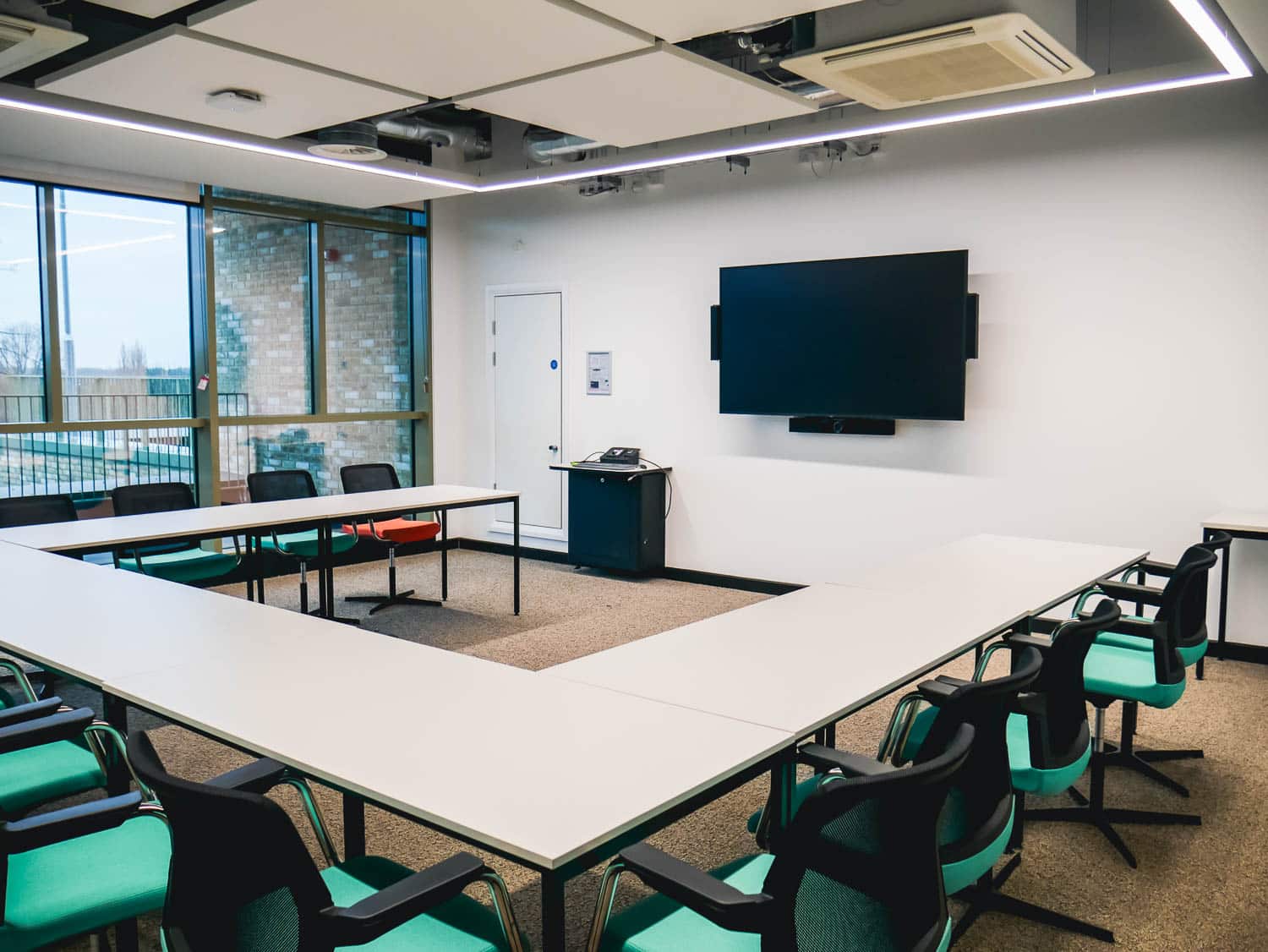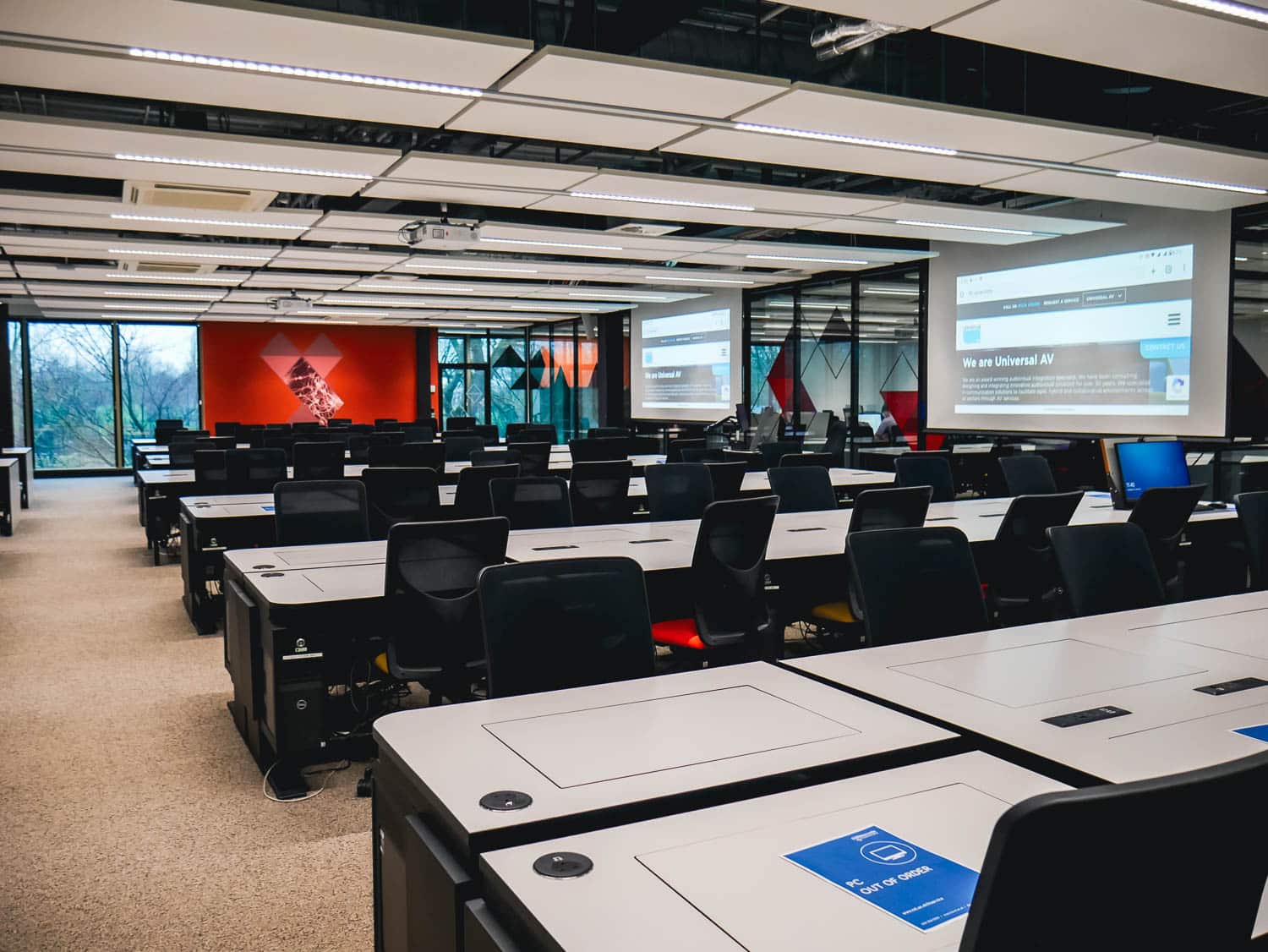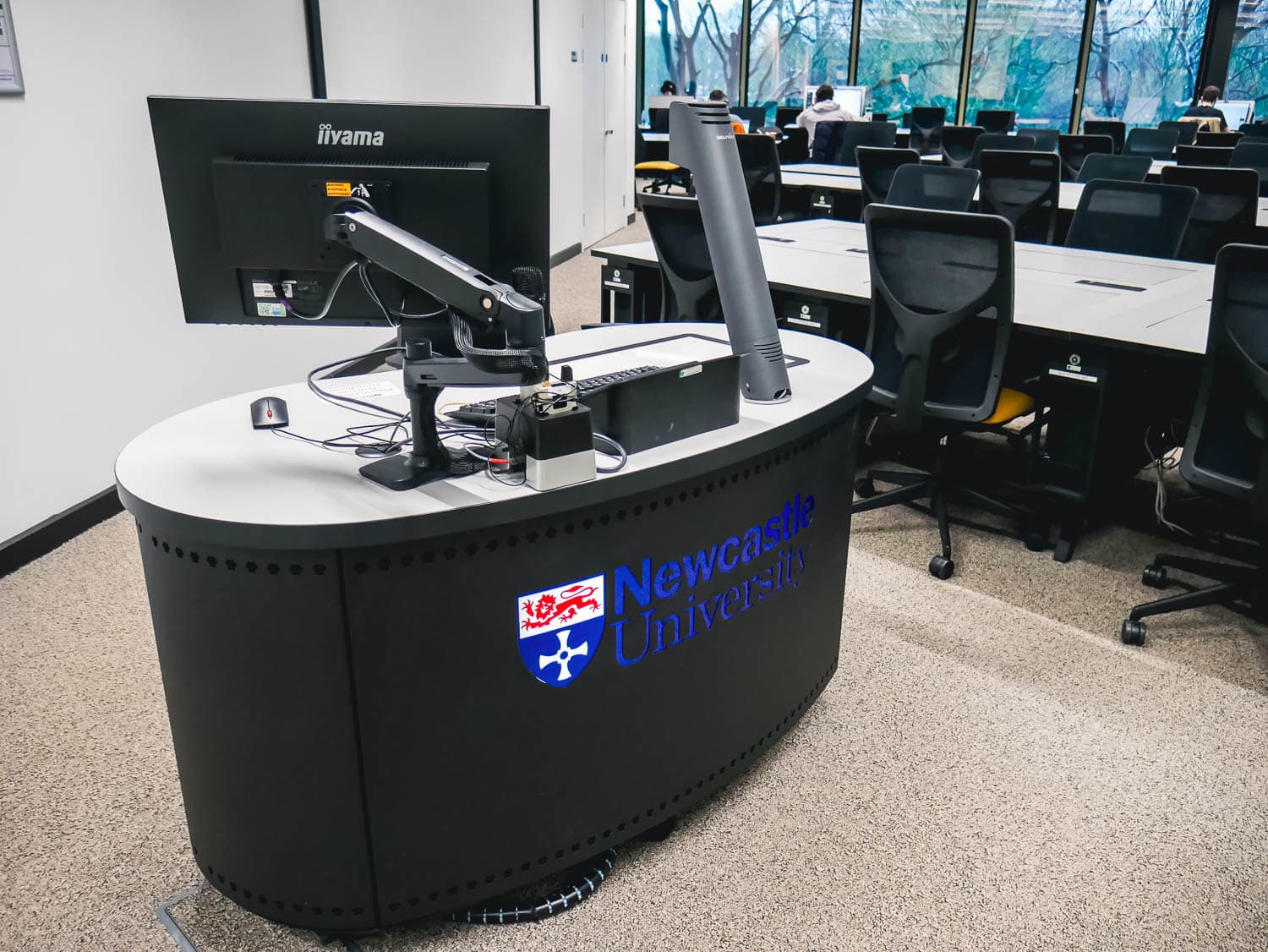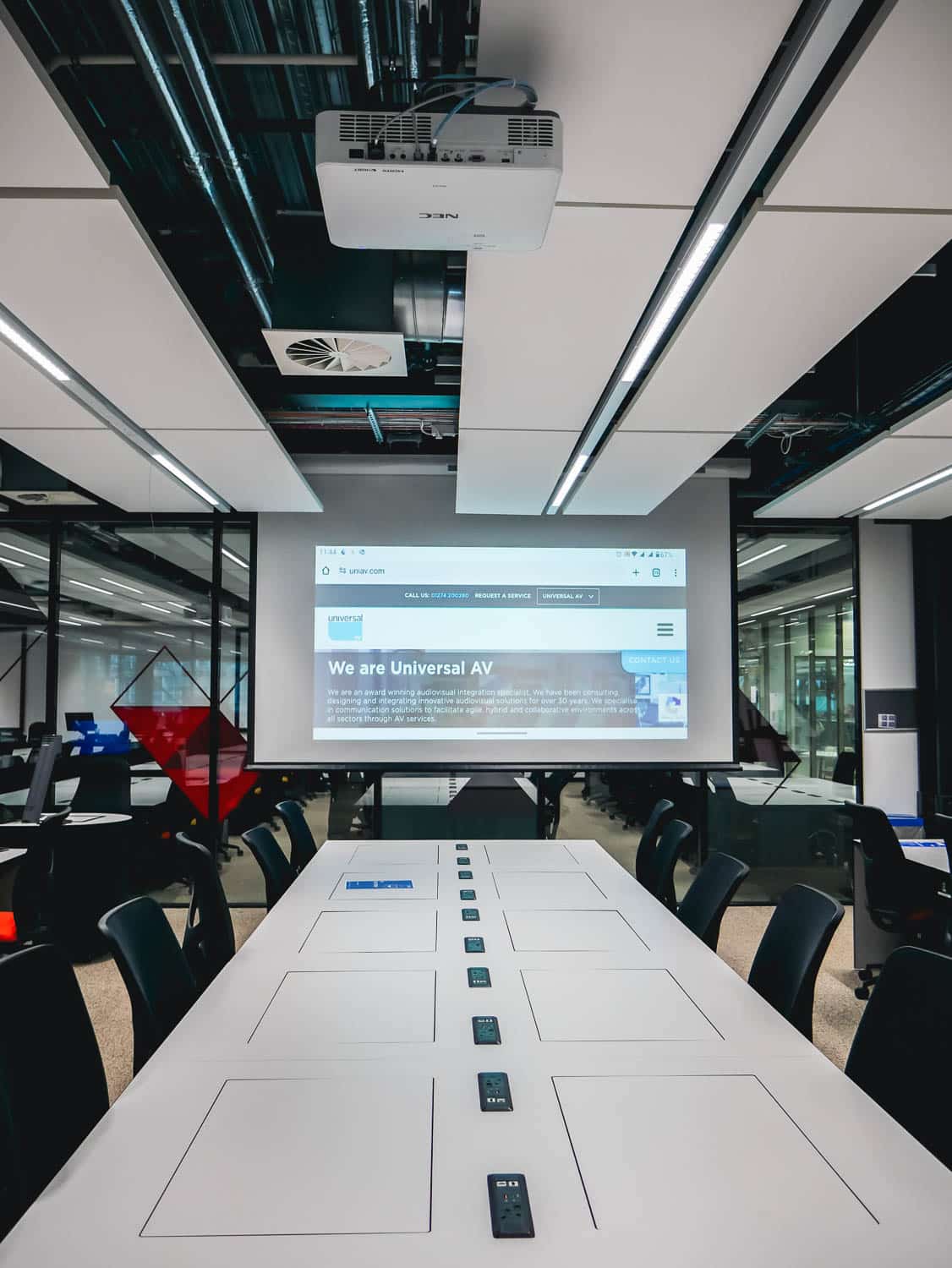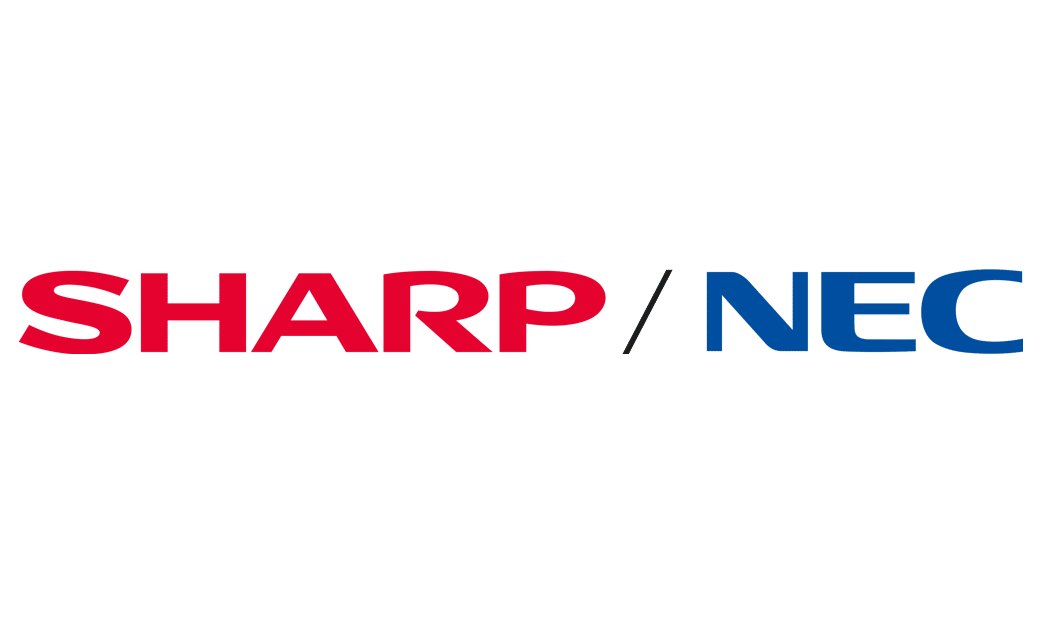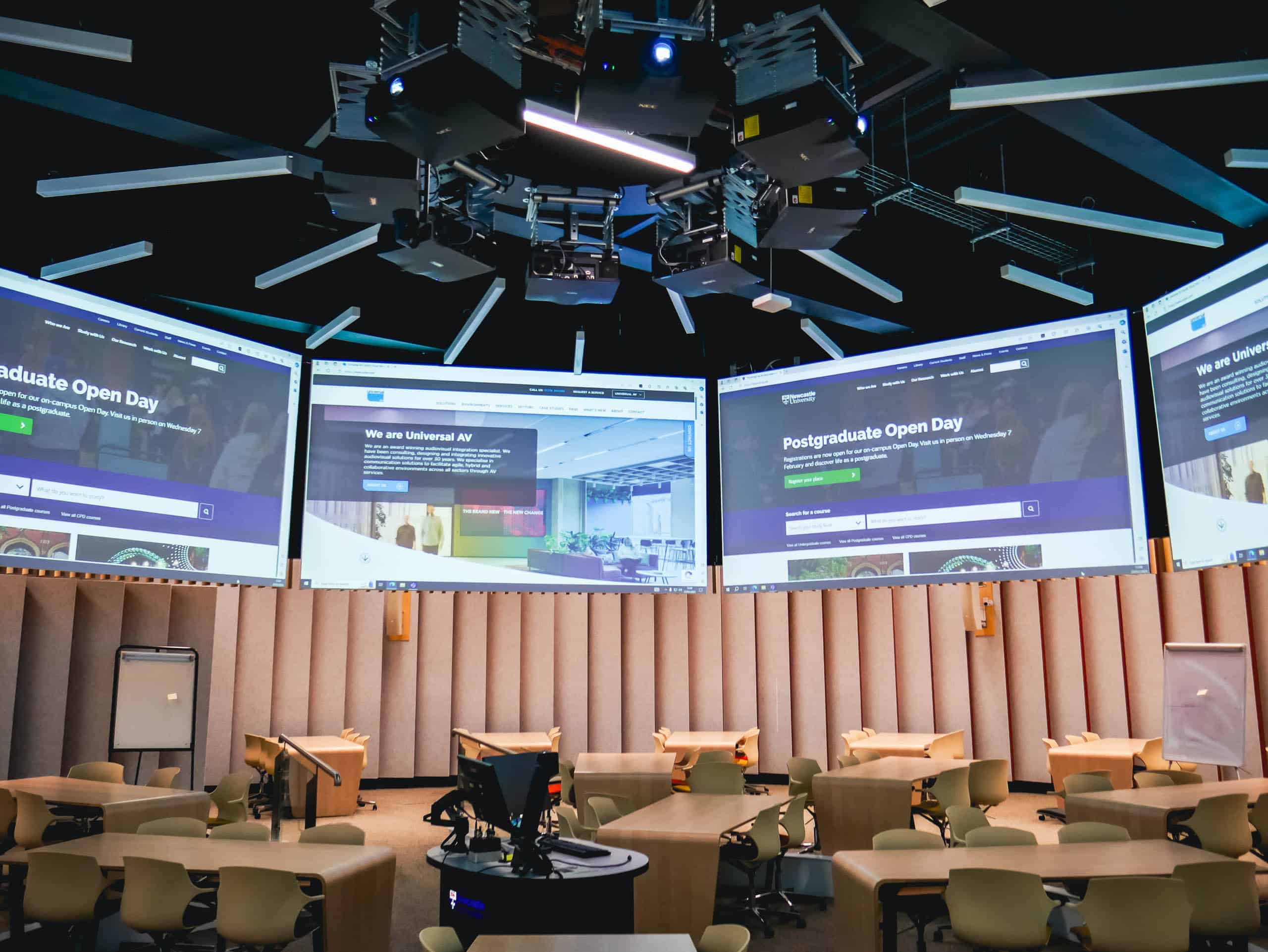
Newcastle University’s commitment to investing in state of the art facilities has been evident throughout its history, aiming to maintain its position as a world-class institution. The recent redevelopment of the Stephenson Building, costing £110 million, underscores this dedication to providing state-of-the-art infrastructure for its students, researchers, and staff.
Stephenson is the home for people who make things work. A world class engineering facility housing future engineers, researchers, designers and visionaries to collaborate and tackle world challenges.
The redevelopment of the Stephenson Building at Newcastle University not only aims to modernise the infrastructure but also prioritises sustainability and preservation of its 60-year heritage. This approach ensures that the building continues to serve as a symbol of the university’s history while also being a beacon for the future. In this transformed hub, it becomes a place to:
- Engage, support, and challenge students to fulfil their potential.
- Drive transformative research across multiple disciplines.
- Boost the economy, social wellbeing, and cultural richness of Newcastle.
The redevelopment and building works would take place across 2 phases with phase 1 to be opened in September 2023 ahead of teaching.
A second phase lasting 12 months is now underway renovating the original building’s teaching and office spaces. The project will be completed in September 2024.
Brief:
The engineering school was split across several buildings on campus and the redevelopment of Stephenson was designed to bring all these arms together into one central location. This was part of the reason for the expansion, but another key driver was the faculty needed more collaborative/small group learning facilities designed into the building.
Collaboration was one of the main driving factors and why the lecture theatres were designed with collaborative tables and groups of no more than 6/8 and teaching in IT cluster suites and the round.
To support the flexible, collaborative, and digital infrastructure envisioned for the Stephenson Building’s research and education facilities, a range of audio-visual solutions were required. The building’s research facilities will include:
- Flexible Research Space
- Wet and Dry Labs
Inclusive education spaces
The education facilities will enhance student experience and support blended learning and will include:
- Maker Space – a new student-centred zone for interdisciplinary collaboration and creativity
- multi-purpose teaching laboratories
- digital learning spaces with large flat-floor areas for flexible working
- blended social learning spaces
- quiet study areas
- conference and exhibition space for 500+ delegates
Specialist labs and engineering facilities
Solutions
Newcastle University has a strong history with the Sharp/ NEC product and although during the scoping phases we looked at some alternatives, it would not have made sense to move away from a product suite that was used throughout the whole campus. Lecturers/academic were all familiar with the solutions.
The standard teaching room would all have the latest solutions from NEC installed, however advice was sought from audio visual integrators on how best to deal with the collaborative teaching spaces in the round. The University knew what they wanted to achieve but had never carried anything out like that before so were open to suggestions on how best to achieve the desired outcome.
Collaborative Lecture Theatre
The University wanted to create a more engaging and interactive learning environment than the conventional lecture hall. They chose a design called “in the round”, where the instructor delivers the content from the middle of the room, surrounded by collaborative pods with screens in every direction. This way, the students can actively participate in the lesson and see the presentation clearly.
The installation of the lecture theatre required a lot of planning and coordination. Account manager Duncan Cave and project manager Jonny Johnston worked closely with the architects, building contractor and Newcastle University AV team to find a solution that met everyone’s expectations this required a comprehensive approach, involving open dialogue, meticulous planning, and a willingness to compromise.
The round was created by positioning eight Sharp/NEE PA1004UL projectors on a rig that was christened the ‘doughnut’. The projectors were suspended by projector ceiling lifts by Screen International. These could drop the projector on a scissor lift action by three metres, this allowed for the units to be individually lowered should access be required. This reduced the downtime and cost of accessing the projectors by conventional methods. The eight 4m wrap around screens used for projection were also by Screen International.
Control and switching within the room was by Q-SYS with two lecterns by Dalen Top-Tec being required, one smaller unit in the centre of the room and one larger next to the door. This would allow for teaching to be carried out from two different positions. BluStream HDBT extender units provided the signal transmission to the projectors. These were located in the rack which was position in a room to the side of the lecture theatre, these were doubled up for redundancy in another effort to keep the room in use, should one unit fail the projector could be switched to the second input with little fuss.
Audio for the space was by JBL, eight CBT-70J units were fitted to the outside walls and driven by Powersoft Quattrocanali amplifiers, Sennheiser Speechline microphones were employed for voice reinforcement.
Lecture Theatre
The lecture theatre was set up in a more traditional way with three Sharp/NEC PA1004UL projectors mounted on Unicol supports projecting on to 4m wide fixed framed screens by Sapphire.
Control was by Q-SYS with signal distribution by BluStream. Audio within the room was by four JBL CBT 50LA speakers driven by a Powersoft Quattrocanali amplifier with Sennheiser Speechline units providing voice reinforcement.
A Dalen Top-Tec Contor Duet lectern was positioned to the front of the room, this also housed all of the equipment along with a Wolfvison visuliser and wireless casting by Mersive Solstice units.
Computer Clusters
The size of the faculty necessitates teaching the same subject matter multiple times due to the high intake of students. To address this, IT clusters were implemented to enable the seamless transmission of lectures and content across all classrooms. The three clusters could accommodate 120 students each, so to complement teaching through the three spaces glass walls were used to keep the rooms separate and to allow for combined teaching.
Two of the rooms got Sharp/NEC P605UL projectors with one room getting two Sharp/NEC PV710UL projectors. This was because of throw distance requirements where an interchangeable lens was required.
Control in these rooms was Extron MLC 200 Plus, with Extron IN1808 units for switching, JBL CBT 50LA and Q-SYS DSP units for audio and Sennheiser for voice reinforcement. All the equipment was housed in a Dalen Top-Tec Contour Nano lectern with a Wolfvision visuliser mounted to the top and Mersive Solstice for wireless presentation connection.
Meeting Rooms
The meeting rooms varied in capacity from 6 to 30 people. The smaller rooms we fitted out with large NEC screens, Extron control units, BluStream signal transmission, Mersive Solstice wireless sharing and Poly studio video sound bars.
The large conference room utilised NEC projection, Q-SYS configurable video endpoints, QSC cameras, Audac AMP22 amps, JBL Control 1 speakers and Sennheiser Team connect ceiling mounted microphones.
Why Universal AV
The University went out to tender via the NEUPC framework, and had several submissions back, all with varying options for the collaborative areas.
“The response from Universal AV was incredibly detailed. The designs and schematical drawings returned demonstrated various options for the collaborative areas. You could see the time and effort that had gone into the return.. It showed Universal AV clearly understood what we were trying to achieve, our vision and we could understand your recommendations for the spaces. You showed a deep understanding of this specific project which was key as well as competitive pricing” comments Colin Fahey, AV Manager, University of Newcastle.
Installation
Once awarded the work really began, with detailed meetings on exact specifications of products such as lecterns, the solution that would eventually be installed in the drum, as well as detailed projects plans for the contractors as first fix would need to be carried out well ahead of installation.
“The team ran this whole project via Microsoft teams, everyone had access to the project log and documentation in real time. Any comments, issues or changes to the original brief were captured and shared to all stakeholders. This improved communication and the flow of information,” commented Mark Atkinson at Universal AV.
“The time we took to evaluate and go through the kit list, looking at each space to ensure all were clear on how it was going to function was key. It allowed us to highlight an issue either party saw and work through them, coming up with different solutions where needed” continued Colin.
New buildings can always come with issues, usually delays to the build and this was no exception. There is always an element of buffer built into the project plan for this. Universal worked with the University and our contractor to overcome and accommodate changes to the schedule.
“The team on site from Universal AV were phenomenal” comments Colin. “They constantly provided updates as to where the project was, the challenges faced and how they would overcome them. It meant we could open all teaching spaces on time as originally planned.”
Benefits
The primary advantage is the consolidation of the faculty, eliminating the inconvenience of being spread across campus—a pivotal improvement. Additionally, this marks the university’s inaugural incorporation of two collaborative lecture theatres within a single building, a significant departure from past practices. This innovative setup has proven highly beneficial for both engineering students and academics, fostering seamless collaboration and enhancing the learning experience.
Students have a nice, inviting building to study in, with impressive facilities including a huge amount of computer space and practical space for either element of the course.
We are eagerly anticipating the commencement of Phase 2. The facility is set to enhance its already commendable capabilities, and we are confident that the forthcoming developments will be very impressive.
“This project required us to create a couple of collaborative spaces that were substantially different from our standard spaces. We knew these spaces would be challenging which is why we tendered this project early to ensure we could work in collaboration with the AV supplier, the main contractor, and our Estates department. Bringing Universal AV on board earlier in the process ensured we could develop and refine the designs alongside the main contractor to ensure all options and solutions were considered until we agreed on the best way forward. The result in the main collaborative Lecture Theatre is amazing to see and I can’t wait to see to see what this partnership will deliver in Phase 2”.
Comment from Newcastle University
““The team on site from Universal AV were phenomenal” comments Colin. “They constantly provided updates as to where the project was, the challenges faced and how they would overcome them. It meant we could open all teaching spaces on time as originally planned.””
Colin Fahey
AV Manager, University of Newcastle.

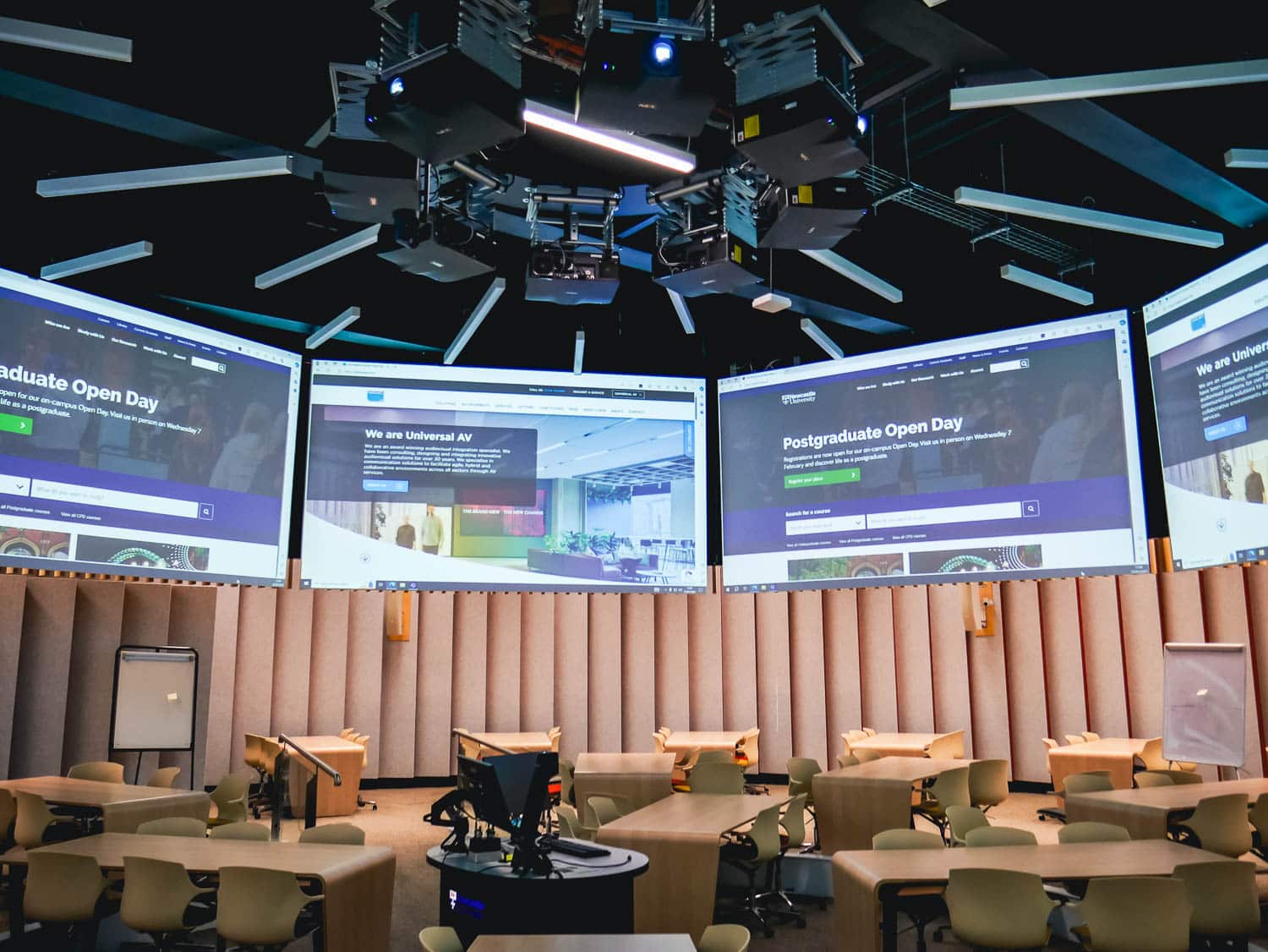
Our Partners on This Project
Other case studies to explore:
-
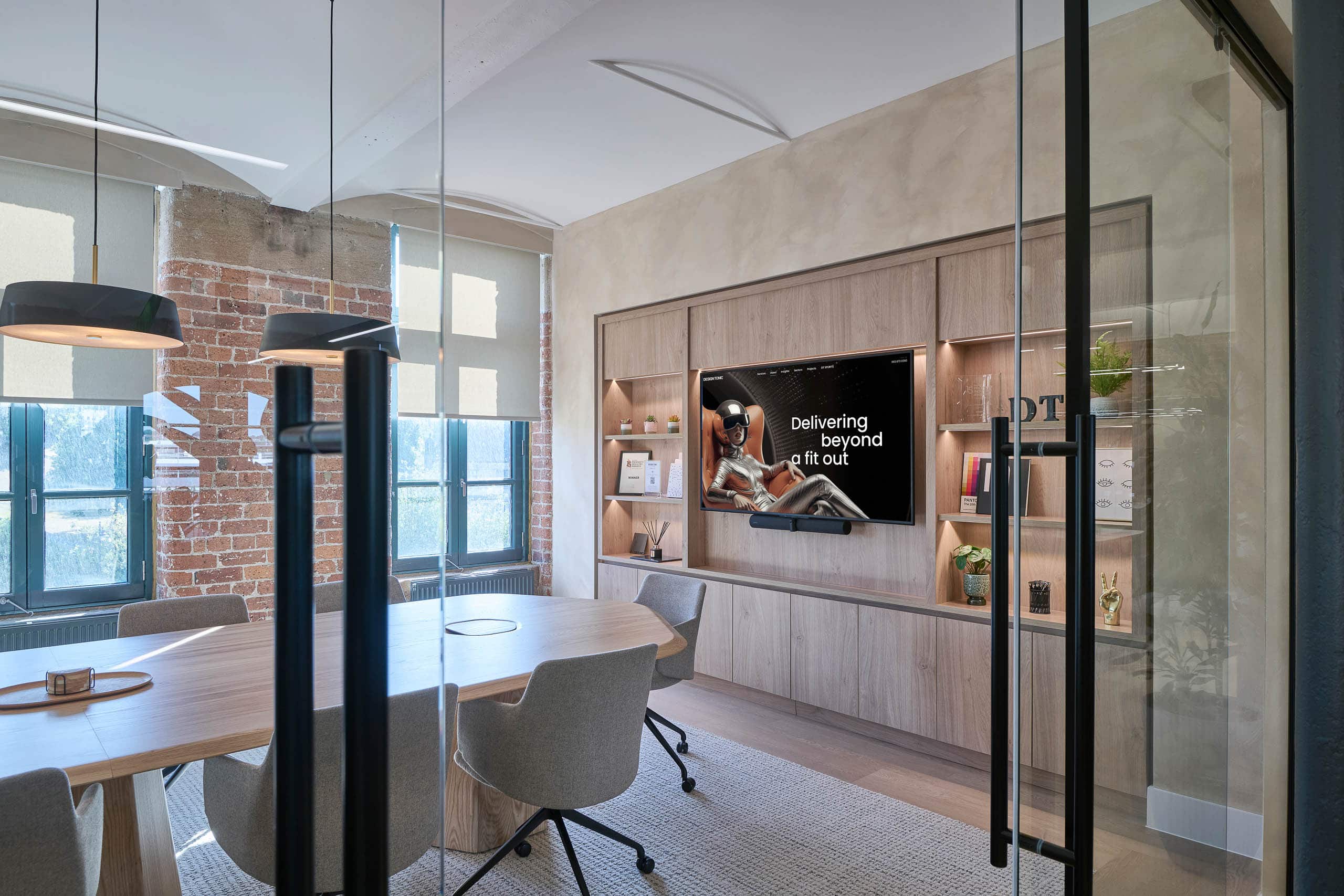
Collaboration in Design: Technology doesn’t have to compromise design, with the right partner, it can elevate it.
Design Tonic’s new meeting space blends sleek aesthetics with seamless technology, a showcase of how AV can elevate design without compromise.
Read More
-
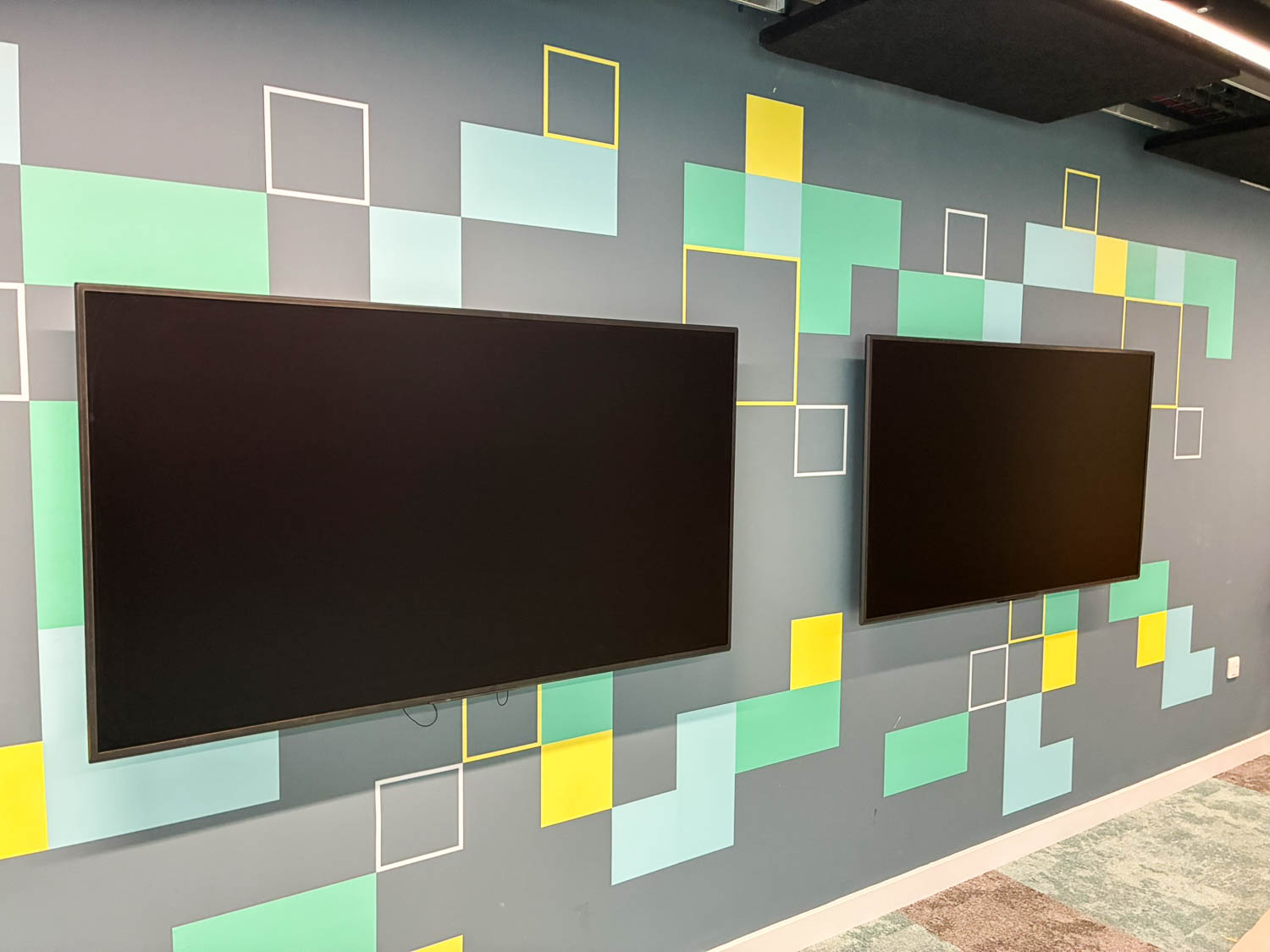
Universal AV Delivers Digital AV Solutions for Teesside University’s Digital Life Building
Universal AV transformed Teesside University's Digital Life Building with cutting-edge AV solutions that support collaboration, interactivity, and sustainability. From Cyber Classrooms to dynamic open-space displays, each installation reflects the university’s vision for a future-focused digital campus. The result is a scalable, user-friendly environment where technology empowers teaching, research, and innovation.
Read More
-
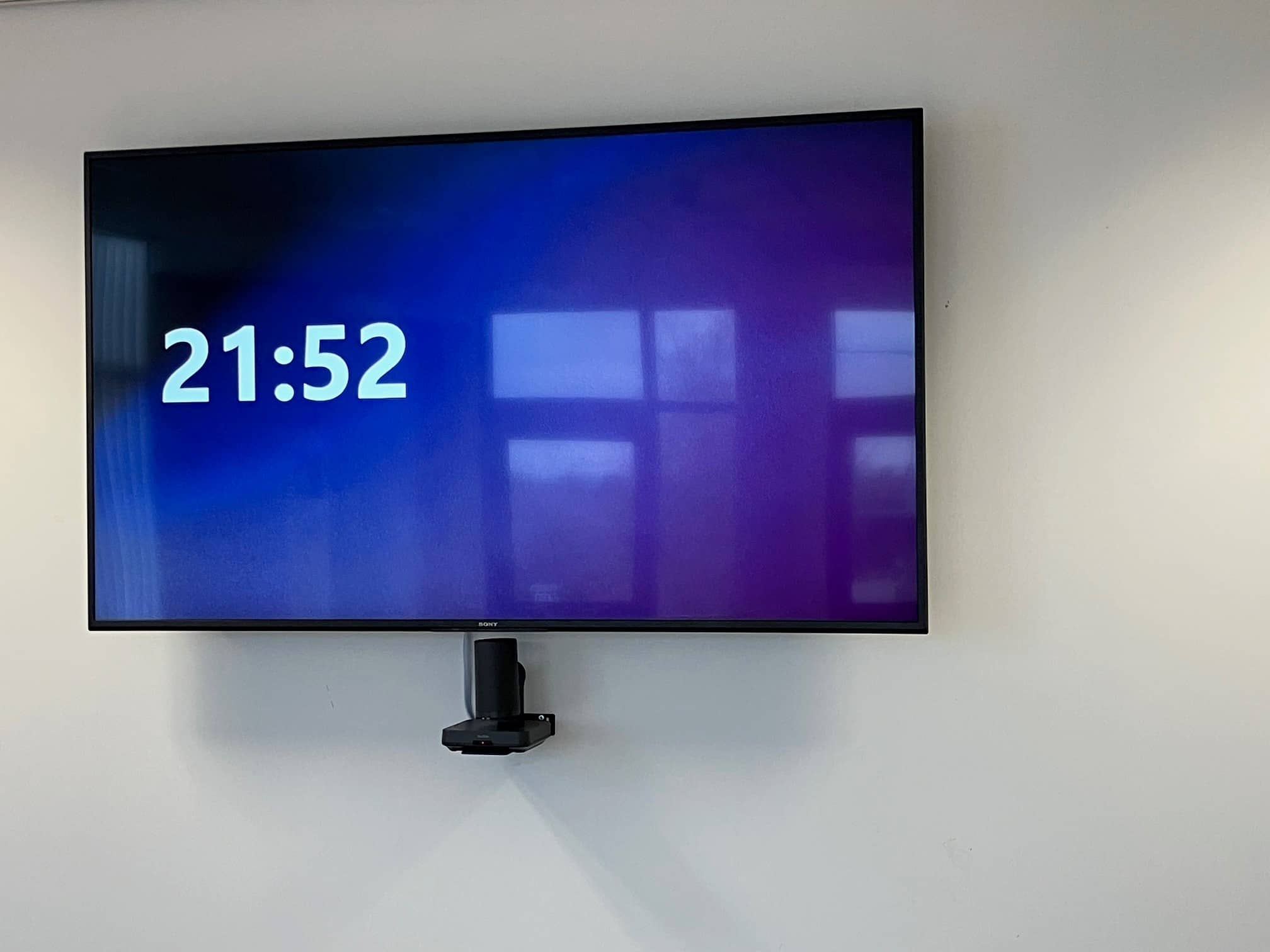
Scalable AV for NHS – Pemberton House & North Ormesby Health Village
Building on the success at Pemberton House, Universal AV delivered tailored Yealink systems across North Ormesby’s boardroom and meeting rooms - enhancing hybrid collaboration, MDT sessions, and incident response. The result: a unified, future-ready AV setup that works seamlessly across both NHS sites.
Read More
Start your project today
To discuss your audio visual needs for your next project contact us. We will work with you to devise a solution to meet your requirements and needs.
Call 01274 200280
Email sales@uniav.com
Send us a message
"*" indicates required fields

